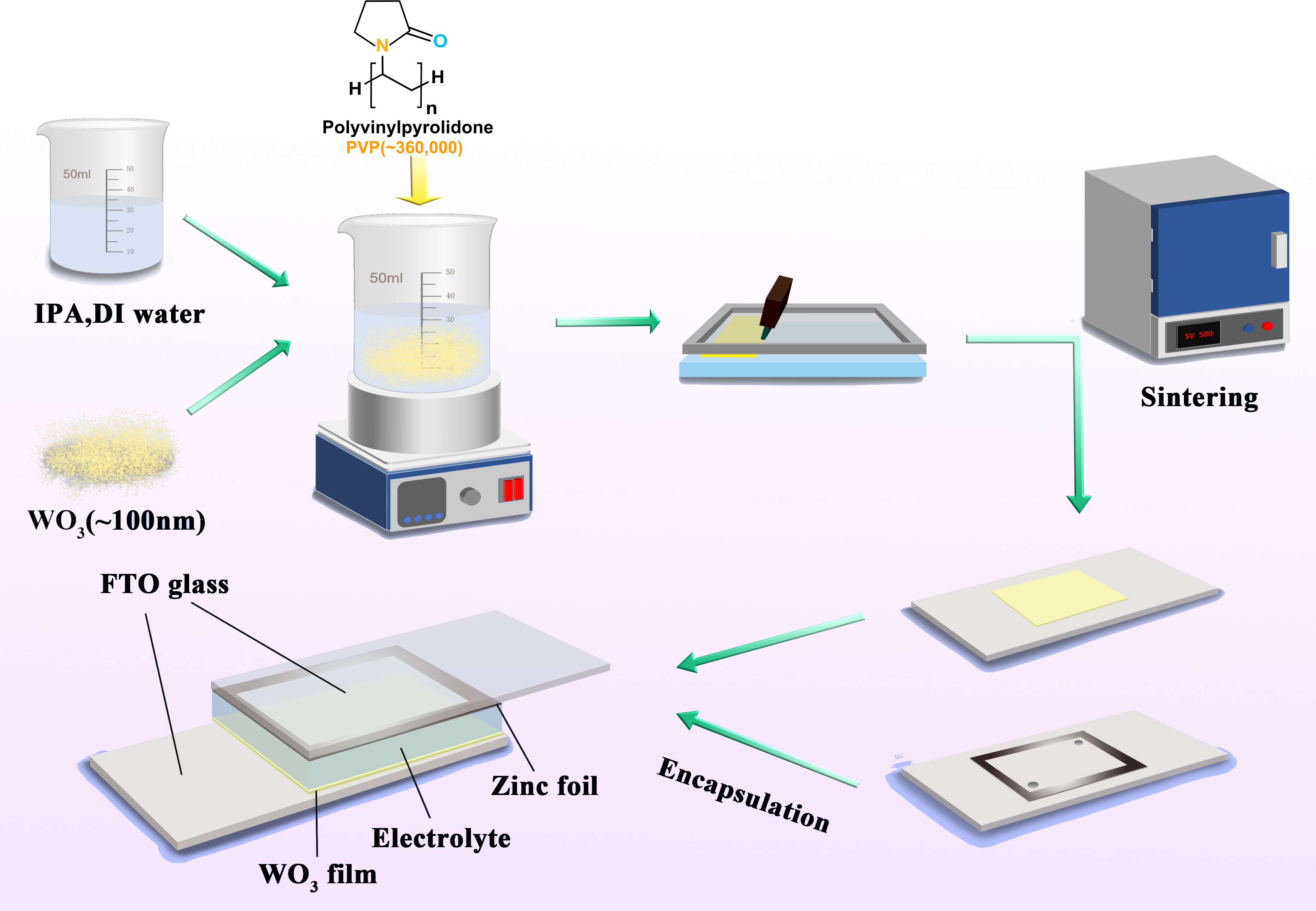
Electrochromic devices possess a sandwich-like structure and can change their color by changing their optical properties such as absorbance and transmittance through the application of voltage. It is currently a hotspot in the field of electrochemical display research and has significant applications in wearable electronics, response sensors, and flexible displays. This study uses tungsten trioxide (WO3) as the cathode color-changing material, zinc foil as anode, and a water-based ink prepared by mixing nano-WO3, solvent, and polyvinylpyrrolidone (PVP) as the thickener in a predetermined ratio to meet the viscosity, surface tension, and particle size requirements of screen printing. The WO3 ink is then transferred onto a fluorine-doped tin oxide (FTO)-coated conductive glass through screen printing, and after sintering at 500∘C, the color-changing layer is encapsulated with VHB tape to obtain an electrochromic device with two electrodes. The properties of the ink at different PVP addition amounts, the morphology of the prepared films, and the performance of the devices were characterized by laser confocal microscope, scanning electron microscope (SEM), viscosity rheometer, surface tension and contact angle tester, fiber spectrometer, and an electrochemical workstation. The results showed that when isopropanol and deionized water were used as solvents, and 8 wt.% PVP as the thickener; the electrochromic device made after sintering had good transparency and could achieve an optical modulation rate of 55.9% within 36 s. This work can significantly impact the industrial application of large-area, low-cost intelligent windows using screen printing technology.

For mass production, multiple color halftoning screen printing (MCHSP) can be considered as the alternative textile printing technology when vivid color gradation is needed and cost for digital printing is concerned. Essentially, MCHSP utilizes the same equipment as traditional screen printing to print overlapped multiple color gradation under halftoning patterns by applying the dedicated treatments on color separation and calibration. In order to ensure the color quality, the equipment calibration and tone curve compensation are required to compensate the variables from equipment setup and heterogeneous fabrics. In this research, we provided the procedure of tone curve compensation to alleviate the discrepancy from heterogeneous fabrics. The experimental result based on 55 samples of 44 different fabrics shows the compensation effectiveness and reveal the distribution of average compensation percentage across fabrics.